Occupational Safety Training for Exhaust Pipe Manufacturing
99,000 ₫
Note: The above price is calculated per person and may vary depending on the number of trainees participating in the course and market fluctuations. For more accurate pricing information, please refer to the price list or contact our consultants directly.
Occupational safety is an important issue in exhaust pipe manufacturing factories and needs to be addressed promptly to ensure the health and safety of workers, as well as to enhance the reputation of businesses. The Occupational Safety Training course is an effective solution to raise awareness about accident prevention for workers involved in exhaust pipe production.
Table of Contents
Toggle1. Overview of Exhaust Pipes
a. What is an Exhaust Pipe?
The exhaust pipe, also known as the exhaust tube, is an important component in the exhaust system of an internal combustion engine. Its main function is to channel exhaust gases from the combustion chamber to the outside air, helping to remove harmful gases produced during fuel combustion. This system not only helps reduce noise but also controls the level of pollutant emissions from the engine, protecting the environment.
In a vehicle’s construction, exhaust pipes are usually made of stainless steel or other heat-resistant materials to withstand high temperatures and corrosion caused by exhaust gases. A standard exhaust system consists of many parts such as the catalytic converter, muffler, and several pipe sections connected to carry exhaust gases from the engine to the outside.
Besides its main function, the exhaust pipe also plays a crucial role in engine performance. The design and condition of the exhaust pipe can affect the airflow and pressure within the system, thereby influencing the vehicle’s operating efficiency and fuel consumption. Regular maintenance and inspection of the exhaust pipe are necessary to ensure stable and safe vehicle operation.

b. Machinery for Exhaust Pipe Production
- CNC Tube Cutting Machine: This machine uses numerical control technology to cut stainless steel pipes or other heat-resistant materials to the desired size and shape. CNC cutting machines ensure high precision and increase labor productivity.
- CNC Tube Bending Machine: This machine bends pipes into complex shapes necessary for assembling the exhaust system. CNC bending machines allow for various bending angles with high accuracy, ensuring the exhaust pipe fits precisely within the vehicle’s installation space.
- Automatic Welding Machine: This machine performs precise and strong welds between pipe sections and other parts of the exhaust system. Automated welding technologies, such as TIG or MIG welding, ensure uniformity and high product quality.
- Stamping Machine: Used to stamp parts such as mufflers and other components of the exhaust system. Stamping machines help create complex and precise shapes in accordance with technical designs.
- Quality Testing Machine: Includes equipment for pressure testing, durability testing, and gas leak detection to ensure each exhaust pipe meets quality and safety standards. Quality testing helps detect technical defects early and improves production processes.
- Grinding and Polishing Machine: Used to finish the surface of the exhaust pipe, ensuring smoothness and shine. This not only improves the product’s appearance but also enhances corrosion resistance and the pipe’s lifespan.

c. Famous Exhaust Pipe Brands
There are many well-known brands specializing in manufacturing exhaust pipes and car exhaust systems, originating from various countries around the world. Below are some notable brands:
- Bosal: Bosal is a multinational company headquartered in Belgium, specializing in exhaust systems and automotive parts. Bosal is known for high quality and innovative exhaust system designs that meet strict environmental standards.
- MagnaFlow: MagnaFlow is a US-based brand specializing in high-performance exhaust systems for both regular cars and racing vehicles. MagnaFlow products are highly rated for performance and unique sound design.
- Flowmaster: Also from the USA, Flowmaster is famous for mufflers and exhaust systems designed to improve vehicle performance and sound. Flowmaster has a long history in the automotive industry and is favored by many car enthusiasts.
- Akrapovič: A brand from Slovenia, renowned for premium exhaust systems for motorcycles and cars. Akrapovič uses advanced materials such as titanium and carbon fiber to produce lightweight, durable, and high-performance products.
- Borla: Another American brand known for stainless steel T-304 exhaust systems. Borla’s products are distinguished by high durability, impressive sound design, and lifetime warranty.
- Remus: An Austrian company specializing in exhaust systems for motorcycles and cars. Remus is known for advanced technology and sporty designs that deliver optimal performance and powerful sound.
- HKS: A famous Japanese brand in the performance upgrade parts market, including exhaust systems. HKS is popular among racing and high-performance vehicle communities for product quality and reliability.
These brands have established their market position thanks to superior product quality, innovation in technology and design, as well as commitment to meeting strict environmental and performance standards.

d. Specific Jobs in an Exhaust Pipe Manufacturing Plant
Group 1
- Executive director, deputy executive director, department heads in the exhaust pipe manufacturing plant.
Group 2
- Safety officers: manage safety in the plant, design safety procedures, supervise and urge employees to comply with safe working processes.
Group 3
- Tube Cutting: This job uses CNC cutting machines to cut sections of stainless steel or other heat-resistant materials to required sizes. Workers must operate machinery, check the accuracy of cut pipes, and ensure no technical errors.
- Tube Bending: This job involves using CNC bending machines to bend pipes at required angles and shapes for exhaust system design. Workers need skills to operate machines, read technical drawings, and verify the accuracy of bent pipes.
- Welding: A crucial job in the production process, involving welding pipe sections together and attaching other components to the exhaust system. Welders must be skilled in techniques like TIG and MIG to ensure strong, leak-free welds.
- Stamping: This job uses stamping machines to shape parts of the exhaust system, such as mufflers. Operators must ensure stamped parts conform to designs without shape defects.
- Surface Finishing: Includes grinding, polishing, and surface treatment of exhaust pipes to ensure smoothness, shine, and improved corrosion resistance. Workers use grinding and polishing machines and chemical treatments to finish products.
- Assembly: At this stage, finished parts are assembled into a complete exhaust system. Assembly workers must follow technical procedures, ensure correct positioning of parts, and carefully inspect to guarantee proper functioning.
- Quality Control: This critical job ensures the final product meets quality standards. Quality inspectors use measuring devices, pressure tests, gas leak tests, and durability tests to detect and fix technical defects.
Group 4
- Office work, support, sales, marketing.
- Production management, quality management, human resources management, materials management, financial and accounting management.
- Research and development of new products, packaging design.
2. Overview of Occupational Safety Training for Exhaust Pipe Production
In this article, we focus on issues related to Group 3, because Group 3 directly participates in the production process and faces the highest occupational safety risks. For more about other groups, see here.
a. What is Group 3 Occupational Safety Training?
- Group 3 Occupational Safety Training consists of sessions that equip workers with awareness of how to prevent occupational accidents.
- The safety training course helps workers identify and avoid hazards, reducing the risk of workplace accidents.
REGISTER FOR OCCUPATIONAL SAFETY TRAINING SERVICE
b. Training Duration
Initial safety training duration
- Total training time is at least 24 hours, including exam time.
- 8 hours of theory on safety policies and occupational hygiene laws
- 8 hours of theory on basic knowledge of occupational safety and hygiene
- 4 hours of theory on specialized training content
- 2 hours of practical training on specialized content
- 2 hours of final theory exam at the end of the training course
The safety training center will divide the time into multiple sessions depending on workers’ schedules. Usually, there are 6 training sessions over 3 days, provided the manufacturer arranges continuous learning time.
Periodic safety training duration
- Before the occupational safety card expires, workers must retake the periodic occupational safety training, with a duration at least 50% of the initial safety training time.
Explanation: the total periodic occupational safety training time is at least 12 hours, including exam time. After completing periodic training and passing the exam, workers will be reissued or extended their occupational safety card.
c. Training Course Content
| No. | TRAINING CONTENT | TRAINING DURATION (HOURS) | |||
| Total | Including | ||||
| Theory | Practice | Exam | |||
| I | System of policies and laws on occupational safety and hygiene | 8 | 8 | 0 | 0 |
| 1 | Overview of the legal documents system on occupational safety and hygiene. | 6 | 6 | ||
| 2 | System of standards and technical regulations on occupational safety and hygiene. | 1 | 1 | ||
| 3 | Specific regulations of state management agencies on occupational safety and hygiene when constructing, expanding, or renovating facilities for production, storage, and inspection of machines, equipment, materials, and substances requiring strict occupational safety and hygiene. | 1 | 1 | ||
| II | Basic knowledge of occupational safety and hygiene | 8 | 8 | 0 | 0 |
| 1 | Basic knowledge about hazards and harmful factors at the workplace. | 4 | 4 | ||
| 2 | Methods to improve working conditions. | 1 | 1 | ||
| 3 | Safety culture in production and business. | 1 | 1 | ||
| 4 | Rights and obligations of employers and employees; safety policies and regimes for workers; functions and duties of safety networks and safety officers. | 1 | 1 | ||
| 5 | Safety and hygiene regulations, safety signs, instructions, use of safety equipment, personal protective equipment; first aid skills for workplace accidents, prevention of occupational diseases. | 1 | 1 | ||
| III | Specialized training content | 6 | 4 | 2 | 0 |
| Comprehensive knowledge of machines, equipment, hazardous substances; risk analysis, management of occupational safety and hygiene, safe working procedures with machines, equipment, and substances requiring strict safety and hygiene. | 6 | 4 | 2 | ||
| IV | Final safety training exam | 2 | 2 | 0 | 0 |
| Total | 24 | 22 | 2 | ||
See more training contents of the 6 groups
d. Occupational Safety Card
After completing the occupational safety training course and passing the exam, workers will be issued an occupational safety card (commonly known as the occupational safety certificate for Group 3).
The Group 3 safety card clearly shows information such as full name, date of birth, job, and specific working environment. It also includes training duration, an official red stamp, and a signature confirming course completion.
According to the safety card issuance regulations specified in Clause 2 of Article 24 of Decree 44/2016/ND-CP, there are two cases:
- If the employer and employee have a labor contract, the employer must sign, stamp, and endorse the safety card for Group 3 workers after they complete training from an occupational safety training unit and pass the exam.
- If the worker is freelance or temporary, without a labor contract, the training unit must sign, stamp, and endorse the safety card after the worker completes the training and passes the exam.

3. Identifying Hazards Affecting Workers in Exhaust Pipe Production
- Risks from machinery and equipment:
- Cutting and crushing: CNC cutting machines, pipe bending machines, and stamping machines have fast-moving and sharp parts. Workers can be injured by direct contact with these parts.
- Risks from welding processes:
- Radiation and burns: TIG and MIG welding produce sparks, high temperatures, and intense light that can cause burns and eye damage.
- Risks from chemicals:
- Inhalation of toxic gases: Welding and metalworking processes can generate toxic gases such as CO, NOx, and volatile organic compounds.
- Risks from noise:
- Hearing loss: Noise from cutting machines, stamping machines, and welding can harm hearing if exposure is prolonged.
- Risks from slippery work surfaces and heavy materials:
- Slips, trips, and injuries: Floors may become slippery due to oil and grease, and moving or lifting heavy steel pipes can cause musculoskeletal injuries.
- Risks from light and high temperatures:
- Burns and explosions: Welding and heat processing can cause burns from high temperatures and pose explosion risks if heat sources and flammable materials are not properly managed.

4. Safety Measures When Participating in Exhaust Pipe Production
- Safety training and guidance:
- Initial and periodic training: Provide safety training courses for all employees on safe work procedures, machine operation, personal protective equipment (PPE), and accident prevention measures.
- Specific instructions: Ensure all workers clearly understand safety rules and know how to identify potential hazards in the work area.
- Use of personal protective equipment (PPE):
- Safety glasses: Wear safety glasses to protect eyes from welding sparks and metal debris.
- Heat-resistant gloves: Use heat-resistant gloves to protect hands during welding and handling hot materials.
- Respiratory masks: Wear respiratory masks to avoid inhaling harmful gases generated during welding and metalworking.
- Protective clothing and anti-slip shoes: Wear protective clothing and anti-slip shoes to guard against burns and slips.
- Machinery safety measures:
- Machine guarding: Ensure all machines are equipped with guards such as shields and safety locks.
- Periodic maintenance: Conduct regular maintenance and inspections to detect faults early and prevent accidents.
- Chemical and emission management:
- Ventilation: Install effective ventilation systems to reduce toxic gas concentrations in the air.
- Safe storage: Store hazardous chemicals in special containers with clear labeling.
- Emission treatment: Use filters and exhaust treatment systems to minimize environmental pollution and protect worker health.
- Noise control:
- Noise reduction devices: Use mufflers on machines and install soundproof panels in the work area.
- Hearing protection: Wear earplugs or noise-canceling headphones to protect workers’ hearing.
- Work area organization:
- Keep clean: Ensure the work area is always clean, free of oil, grease, and debris on the floor.
- Neat arrangement: Arrange tools and equipment neatly to reduce accident risks.
- Fire prevention and fighting:
- Firefighting equipment: Equip the work area with fire extinguishers and fire alarm systems.
- Fire safety training: Train employees on fire prevention measures and how to respond in case of fire.
- Periodic safety inspections:
- Inspection and risk assessment: Conduct regular safety inspections and risk assessments to identify and mitigate potential hazards.
- Incident reporting: Encourage workers to report incidents or safety hazards promptly for timely action.
- Regularly organize occupational environment monitoring in factories to collect and analyze harmful factors affecting workers, thereby adjusting to reduce hazards and prevent occupational diseases.
These measures not only help protect workers but also improve production efficiency and ensure compliance with occupational safety regulations.
5. Benefits of Occupational Safety Training for Exhaust Pipe Production
An Toàn Nam Việt provides your business with the following benefits upon completing occupational safety training courses as stipulated in Decree 44/2016/ND-CP on occupational safety and hygiene work for companies, factories, and enterprises.
- Workers can recognize potential occupational accident hazards and apply preventive measures to avoid accidents.
- Your business can establish risk prevention measures in production, operation, and maintenance processes.
- Reduce costs caused by safety hazards in labor.
- Uninterrupted production processes increase labor productivity and product quality.
- Comply fully with occupational safety laws to avoid legal risks.
- Create prestige and professionalism in all aspects, thereby enhancing your business brand.
Nam Việt’s training courses are a solution to prevent and combat external factors affecting individuals so they can avoid dangers that may cause injury or worse, death.
REGISTER FOR OCCUPATIONAL SAFETY TRAINING SERVICE
6. Customer Feedback After Completing Exhaust Pipe Occupational Safety Training
An Toàn Nam Việt has many years of experience accompanying various businesses in Vietnam in general and southern provinces in particular. This responsibility is very precious to Nam Việt, which is why its Occupational Safety Training work is increasingly professional. The motivation for An Toàn Nam Việt’s growth comes from positive feedback and suggestions from enterprises. Below are testimonials from our valued partners we have served.
Hoa Dat Construction and Trading Joint Stock Company
“Nam Việt’s service helped us greatly in simplifying occupational safety and completing safety dossiers for work processes. The consulting team was enthusiastic and timely in answering our questions. 5 stars for Nam Việt.”
See more customer interviews after using An Toàn Nam Việt’s services
7. An Toàn Nam Việt’s Capacity for Occupational Safety Training
An Toàn Nam Việt is a reputable and quality occupational safety training center in Vietnam today. The safety training sessions are held continuously at production workshops, factories, or construction sites nationwide (all 63 provinces in Vietnam).
REGISTER FOR OCCUPATIONAL SAFETY TRAINING SERVICE
Occupational safety training license
- An Toàn Nam Việt has been inspected and granted a certificate of eligibility for occupational safety and hygiene training by the Safety Department of the Ministry of Labor, Invalids and Social Affairs. This further strengthens our capacity to conduct occupational safety training.

Materials and lectures
- Before being used in occupational safety training courses, the training materials are reviewed and approved to ensure accuracy and effectiveness.
- Our instructors’ teaching methods are standardized according to An Toàn Nam Việt’s guidelines, developed by experts in occupational safety and hygiene training to maximize knowledge absorption for trainees.
Facilities
- Controlling environmental factors in classrooms improves teaching efficiency and trainees’ knowledge absorption.
- Our training facilities provide spacious classrooms meeting standards of area, lighting, training equipment, etc.
8. Nationwide Reputable Quality Occupational Safety Training Center
At An Toàn Nam Việt, we prioritize the professional passion for occupational safety training. For us, imparting knowledge that helps workers protect themselves equips them with a safe journey in their livelihood, contributing to nation building.
To ensure effective training, we meticulously prepare every detail, from tools, teaching equipment to curriculum, materials, sound, and lighting.
Our occupational safety instructors are experts with many years of experience. They also have research projects identifying hazards across industries and ways to prevent them.
Their lectures are based on practical experience and delivered in an engaging, easy-to-understand manner to workers. Naturally, the content strictly follows Decree 44/2016/ND-CP.
This enables workers to understand many preventive measures and how to protect themselves appropriately in their actual work.
Our training center proudly provides reputable and professional occupational safety training services with the following advantages:
- Competitive training costs while ensuring training quality.
- Flexible training schedules matching companies’ production situations.
- Fast and legally compliant procedures for issuing occupational safety training certificates.
- Experienced instructors with many years in the field.
- Classrooms are controlled for environmental factors that enhance teaching efficiency and knowledge absorption.
- Training materials are tailored to occupational safety work in enterprises.
- An Toàn Nam Việt works dedicatedly and professionally to provide the most accurate and fastest customer support.

9. Additional References for Occupational Safety Training Materials for Exhaust Pipe Production
- Occupational Safety Training Materials Set
- Occupational Safety Training Test Set
- Occupational Safety Materials for Exhaust Pipe Production
- Occupational Safety Training Curriculum for Exhaust Pipe Production
- Occupational Safety Multiple Choice Test for Exhaust Pipe Production
No comments yet

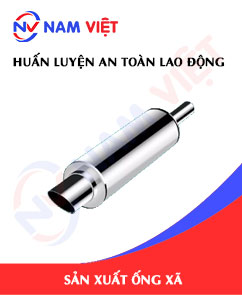
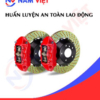
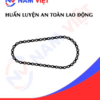





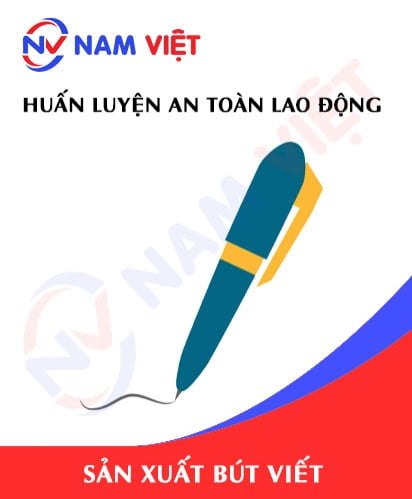
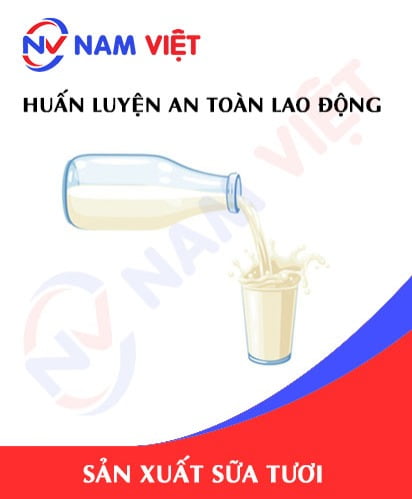
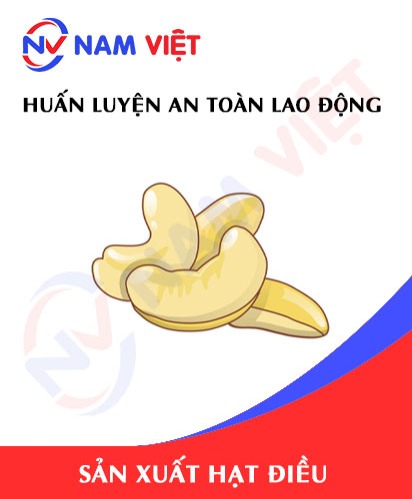



Review Occupational Safety Training for Exhaust Pipe Manufacturing
There are no reviews yet.